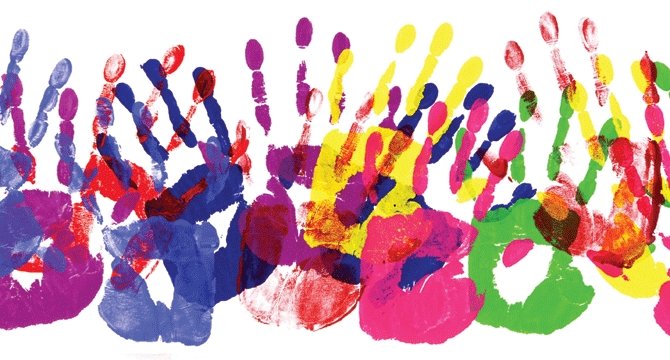
It all started in May with Statistics New Zealand* and its 2038 ethnic population projections. Stats NZ predicted people identifying as Asian, Maori or Pacific would rise from around 35% in the 2013 census, to 52% in 2038, while those identifying as European (or “other”) would fall from 75% to 65% (maths alert: some people identify with more than one ethnicity). And it wasn’t just in Auckland.
Some of the highest rates of Asian population growth have occurred in rural centres, as this infographic shows.

Infographic by Rupal Hira
Suddenly, the reality of a racially diverse New Zealand became impossible to ignore, says lawyer James Dunne, CEO of the new Superdiversity Centre for Law Policy and Business. “It was an eye opener. It’s hard to argue with statistics and the statistics made it clear that the old myth that New Zealand is predominantly a European country is well and truly dead. Five years ago, people did diversity because it was a good thing to do. [After the projections], organisations realised the make up of their staff was an important way to do their job better.”
The Superdiversity Centre’s Stocktake report, published in October, concludes that in the new New Zealand, businesses will only retain market share if they win more diverse customers, and that having a culturally diverse workforce will be a competitive market advantage. The report has been downloaded, in full or in part, more than 70,000 times in the five weeks since it was published.
Dunne believes the conversation will continue in 2016. While not advocating quotas (women v men; Pakeha v non-Pakeha; gay v straights etc), he says successful businesses will be looking at “cultural capability” as a key competitive advantage, and will be trying to work out how to avoid the unconscious bias which leads to people employing people that are like themselves.
“If you hire on merit and it’s always a white, middle-class male, you need to take a look at your processes.” Some companies have started taking names and cultural details off CVs they receive to make sure they aren’t picking Smith, not Singh.
Beca, one of the region’s most successful engineering consultancy companies, has actively recruited and trained a culturally diverse workforce, growing the percentage of migrants in the team from almost none in 2002 to almost 50%.
Kath Dewar, founder and MD of GoodSense marketing, is an active supporter of the Green Party in its bid to improve diversity in New Zealand business, and a key mover to get better gender balance in the media (including in Idealog). She says 2015 has seen some important diversity initiatives overseas – from the gay marriage legislation in the US, to having a women in the key role in the latest (and some say greatest) Mad Max movie: Fury Road.

“Generally I sense a shift on a basic gender level where it’s no longer all right to ignore half the human race.”
But whether this shift is reflected in New Zealand is less clear, she says. “We probably have fewer strong female role models than we had a decade ago,” she says, referring to the time in the early 2000s, when New Zealand Prime Minister, Governor General and Chief Justice were all women.
She points to several other areas where New Zealand appears to have gone backwards in terms of gender balance, including the New Zealand Income Survey in June showing the gap between men and women’s median hourly wages at the highest level since 2008. Moreover, in 2011, a third of senior managers in the private sector were women, but by 2015 this had decreased to a fifth.
In August, The New Zealand College of Midwives, and diversity lawyer Mai Chen, lodged a case in the High Court claiming pay levels for midwives breach gender equity rules under the Bill of Rights Act.
“When compared to male dominated professions/occupations which require a similar level of education, skills and complexity, LMC midwives are paid at a much lower rate and do not receive any extra pay for on call, weekend and night work, administration or computer costs,” the college argues.
The argument that professions dominated by women are less well paid than male-dominated professions requiring similar skills, is a long-running one. In 2008, a study found education support workers (teacher aides), whose jobs were roughly equivalent to prison officers in skills, responsibilities, and emotional and physical demands, were paid considerably less. The support workers’ top hourly pay was $19.29, compared with $32.07 for a senior corrections officer.
While not expecting any step change in New Zealand in 2016, Dewar believes the fact the conversations are taking place is important. In November, a group of senior business and political leaders attended the launch of Champions for Change, a Global Women initiative to promote diversity in New Zealand business.
“I think it’s fantastic that we are having these conversations. Currently there is a real move forward internationally and the more we talk about these things here, the more it shifts attitudes.”
James Dunne reckons 2015 could well prove a turning point, with change starting in 2016.
“This year a lot of people have realized that the time has come to have grown-up conversations. But looking back from 2020, I think we will see real movement from 2016.”
*FYI, I reckon Statistics New Zealand is a great organisation. It is a fervent proponent of plain English, its helpdesk staff willingly help journalists find obscure facts, and it does magic with census data, mining it for information that actually allows people to make good decisions.




